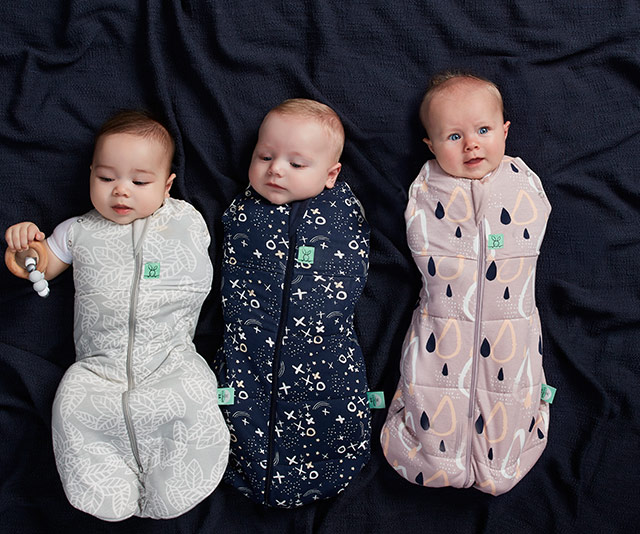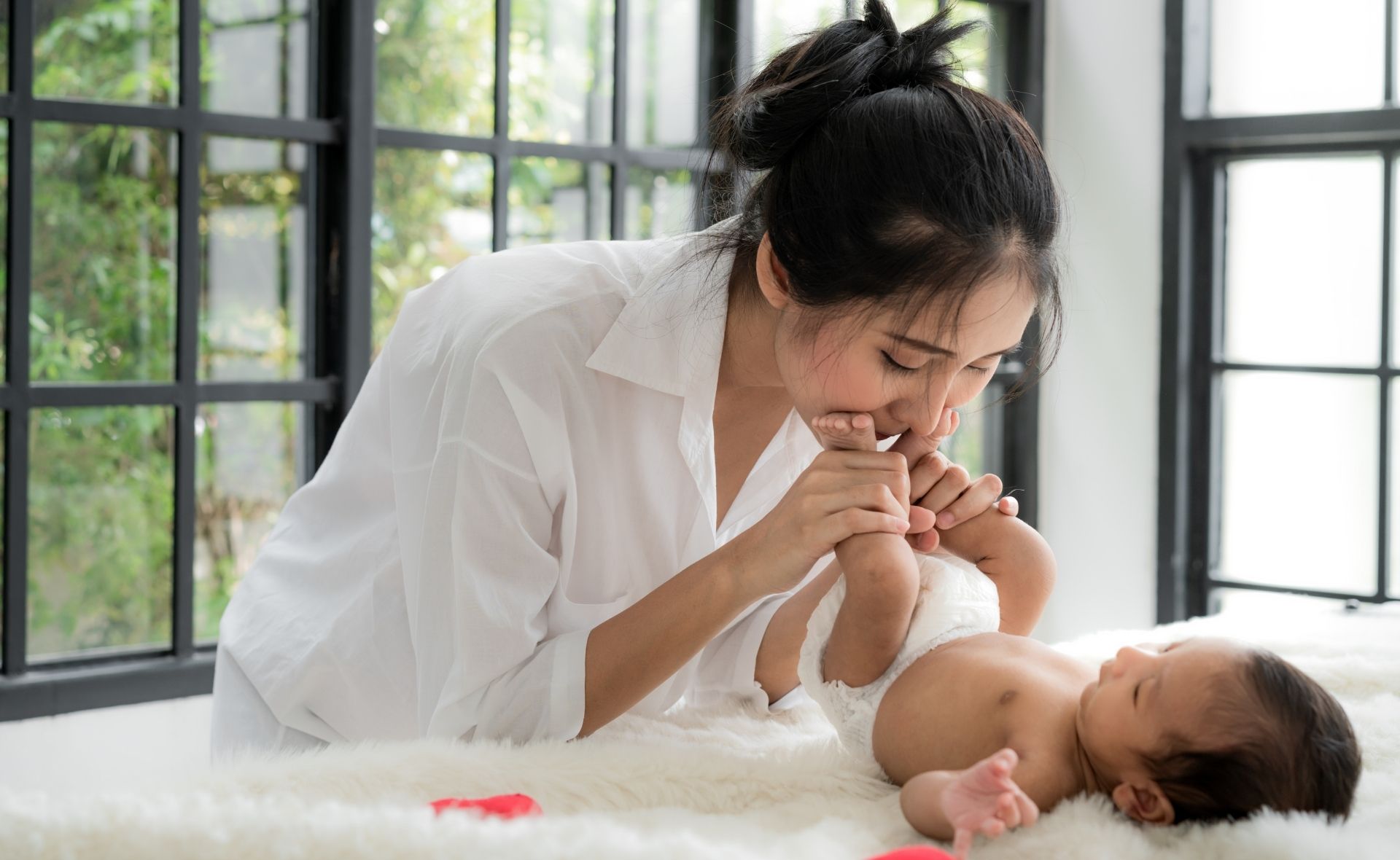Wrapping your baby in a cloth is an age-old way of helping her to feel safe and sleep well. The theory is that wrapping a baby gives her a feeling similar to being in the womb, so she feels safe.
Swaddling also prevents the Moro reflex, when your baby throws her arms and legs out, then retracts them. This survival instinct, often in response to noise or movement, is thought to be a baby’s involuntary attempt to stop herself from falling. If this happens while she’s asleep, it can be enough to startle her awake. And she can do it until she is four or five months old.
Always put your baby on her back when she is swaddled. This reduces the risk of SIDS, and of her rolling onto her tummy, which could make it harder for her to breathe. Red Nose recommends discontinuing wrapping as soon as your baby starts showing signs that she can begin to roll, usually between four to six months of age, but sometimes younger.
What is swaddling?
Swaddling is a simple technique using a square piece of fabric or light blanket. Shaped swaddles with Velcro fastenings and zips are also available and increasing in popularity. These do the same job a little more quickly and easily.
Whichever you choose, it’s important that you know how to swaddle your baby safely. There are two health concerns to be aware of when swaddling: overheating, and affecting the development of your baby’s hips by swaddling too tightly.
Continues after video …
How to swaddle
1 Lay the wrap out flat. Place your baby on top of the wrap, with her shoulders level with the top of the material. Put your baby’s left arm down at her side, and her right arm away from her side.
2 Now bring the side of the cloth over your baby’s left arm and body. Rolling her over slightly, tuck the cloth smoothly under the right side of her body. Then put her right arm by her side.
3 Bring the other side of the cloth over your baby’s right arm and body. Rolling her over slightly, tuck the cloth comfortably and smoothly under the left side of her body.
4 Fold the bottom of the blanket over her legs to her chest, making sure she has room to move her legs and hips freely. Rolling her gently from side to side, tuck both sides of the blanket under her body.

Pro tip: If swaddling with a piece of fabric is proving tricky, try using a zip-up swaddle. ergoPouch have a whole range of adorable yet functional options which offer stretch inserts in the top and side panels to allow your little one to move freely and sleep in comfort. (Image: ergoPouch Australia)
Safe swaddling
Overheating is one of the factors that can put a baby at risk of sudden infant death syndrome (SIDS), so you need to consider the room temperature and dress her accordingly. Keeping an eye on your baby’s temperature comes down to common sense.
“Red Nose does not recommend a particular temperature for a baby’s nursery,” says Yvonne Amos from Red Nose. “Consider the environment and the current room temperature of the home and dress baby accordingly – so don’t dress baby too warm, or too cold.”
First, use a swaddle made from thin, light, breathable material to allow air to circulate around your baby’s body. Adjust the clothing your baby is wearing under the swaddle to suit the temperature. If it’s cold, you may want your baby to wear a cotton bodysuit with arms and legs under the swaddle. If it’s very cold, you might want to layer a singlet under the bodysuit too. Don’t use a blanket as well, because the swaddle acts as this thin layer. Babies and houses are all different, so always check that your baby is at a comfortable temperature. The easiest way to do this is to place your hand at the back of her neck to check that she doesn’t feel too warm or cold. She should feel about the same as you.
The other problem with swaddling is that if the swaddle is wrapped too tightly it can cause problems with your baby’s hips. According to Red Nose, for wrapping to be effective, the wrap needs to be firm but not too tight. Techniques that use tight wrapping with legs straight and together increase the risk of abnormal hip development, while loose wraps are also hazardous as they can cover baby’s head and face. When your baby flexes her legs, and she’ll do this often, she bends her knees – this movement helps the ball joints to properly move into the sockets.
So make sure that a swaddle isn’t so tight around a baby’s lower body that it can stop her legs from flexing. And if she’s tightly swaddled with her legs pointing downwards, this can lead to the ball joints actually moving out of the sockets.
To ensure your baby is safe, don’t swaddle above her shoulders, so there’s no risk of the fabric falling across her face and blocking her airways. And while you want your baby’s chest and arms to be wrapped cosily, the swaddle shouldn’t be too tight. Her chest needs to be able to rise and fall comfortably as she breathes. A good rule of thumb is to make sure you can easily insert one finger into the top of the swaddle.



.png)